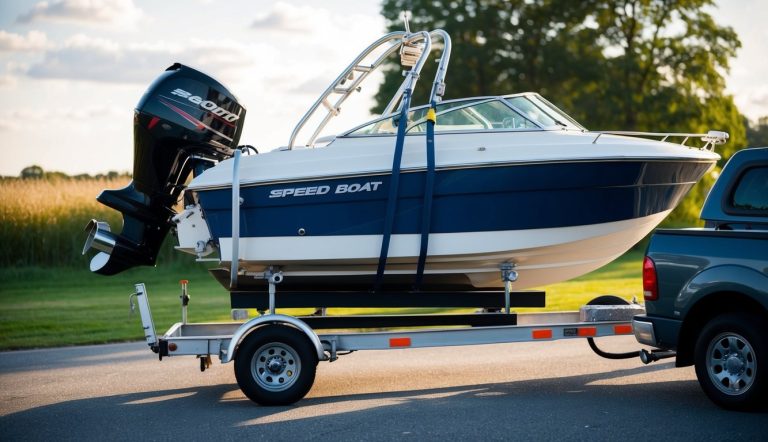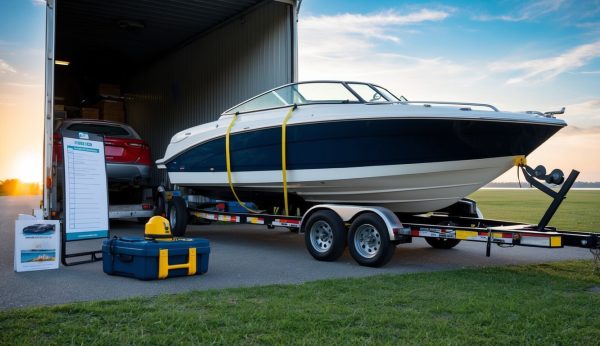Preparing Your Boat for Transportation
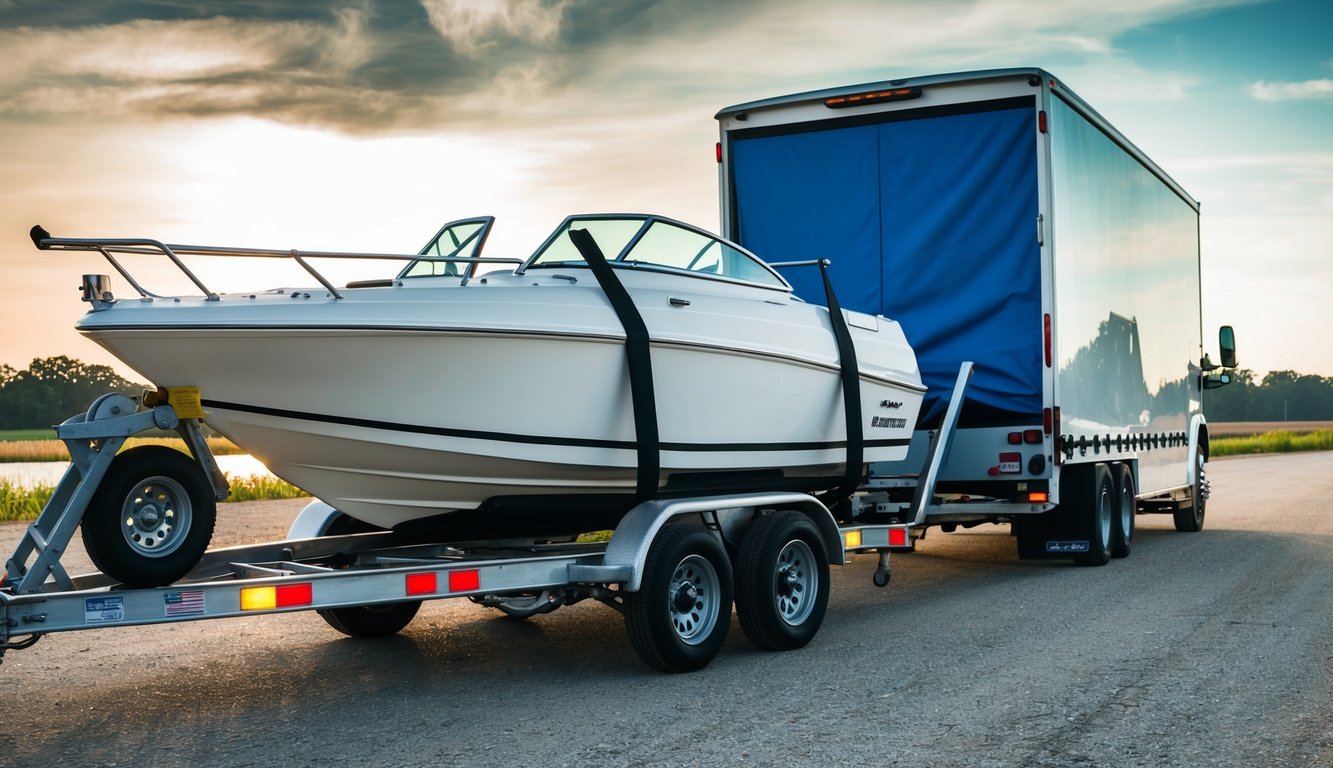
Proper preparation is crucial for a safe boat transport experience. Taking time to secure all components and protect your vessel from road debris will help prevent damage during transit.
Securing the Hull and Propulsion
Before transport day, clean your boat thoroughly to spot any existing damage. Remove all drain plugs from the hull to prevent water accumulation during transport. This simple step prevents excess weight and potential damage.
For speedboats, the propeller demands special attention. Either remove it completely or secure it with protective wrapping. If removal isn’t possible, wrap it with bubble wrap and secure with tape. Disconnect and secure the battery to prevent electrical issues. Many transporters require batteries to be disconnected for safety reasons.
Stow away any loose items like anchors, propellers, and antennas. Secure or remove windshields and lights that might catch wind during transport.
Essential Checklist:
- Empty fuel to ¼ tank or less
- Disconnect battery
- Remove drain plugs
- Secure or remove propeller
- Stow loose equipment
Choosing the Right Covers for Transit
A proper boat cover is your first defense against road debris and weather. Choose a cover specifically designed for trailering, not just for storage. Heavy-duty, water-resistant covers with reinforced straps work best for highway transport. Make sure your cover extends fully over the hull but remains tight against the boat’s surface.
Secure the cover with proper tie-downs at several points. Loose covers can flap violently at highway speeds, potentially causing damage to your boat’s finish.
For added protection, consider these options:
- Hull areas: Apply protective film on vulnerable spots
- Windshield: Add extra padding under the cover
- Gel coat: Clean and wax before covering
Custom-fit covers offer better protection than universal ones. The investment pays off by preventing costly damage during transport.
Ensuring Comfort During the Journey
Your boat needs proper cushioning to withstand road vibrations. Place additional padding between the hull and trailer bunks or rollers. Properly secure all hatches and entrances to prevent them from opening during transit. Use bungee cords or specialty marine straps rather than regular rope.
Check that your trailer is properly adjusted for your boat’s hull design. The weight should be distributed evenly with slightly more weight on the trailer hitch.
For long-distance transport, consider these comfort measures:
- Apply extra padding at contact points
- Check trailer tire pressure
- Inspect trailer lights and connections
- Ensure proper weight distribution
A well-balanced load prevents excessive bouncing and swaying during transport. This protects both your boat and other drivers on the road.
Selecting a Transportation Method
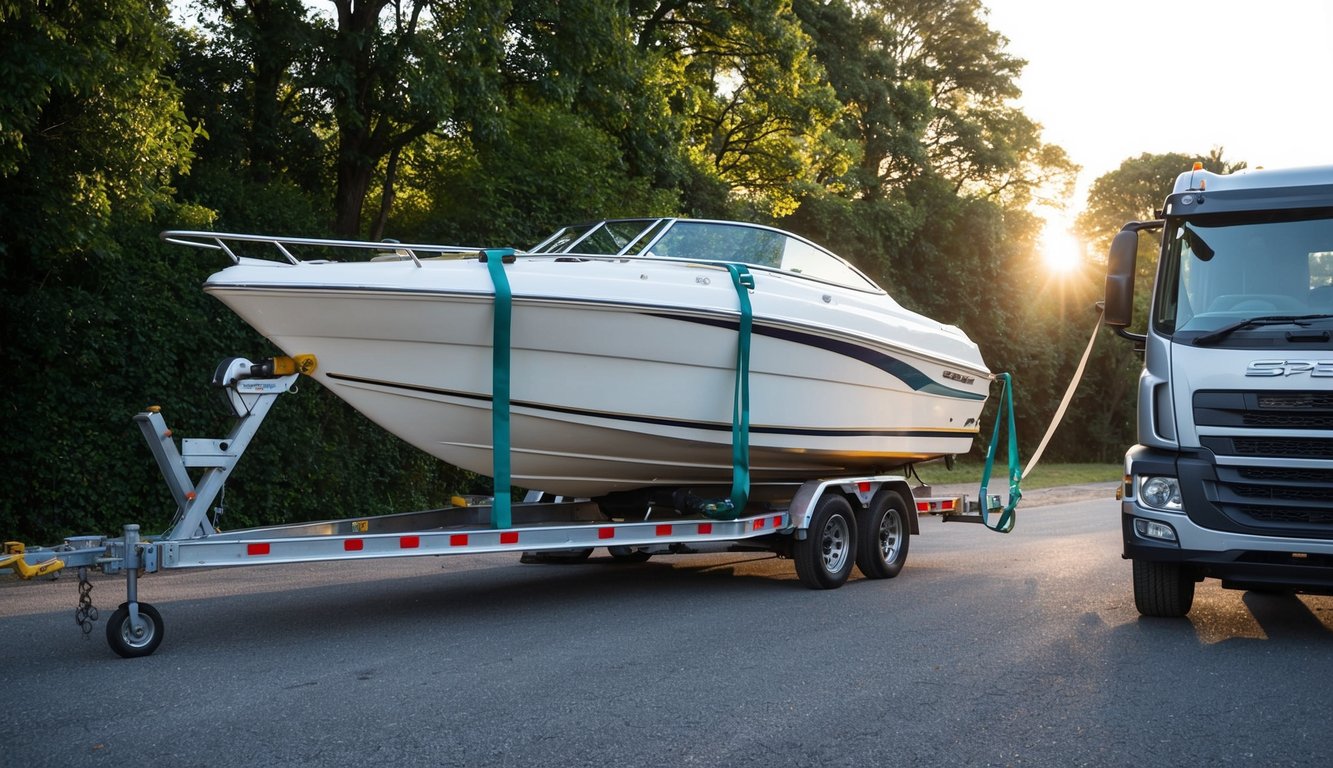
Choosing the right method to transport your speedboat affects both safety and cost. Your decision will depend on the boat’s size, distance to be traveled, and your budget constraints.
Comparing Trailer and Professional Transport Options
Towing your speedboat yourself on a trailer gives you complete control over the transportation process. You can set your own schedule and make stops whenever needed. However, this option requires a suitable tow vehicle with adequate power to handle your boat’s weight and proper towing equipment.
Professional transport services offer expertise and specialized equipment. These carriers have experience securing boats properly and navigating challenging routes. Professional transporters often provide insurance coverage during transit, giving you peace of mind.
When selecting a professional service, check for:
- Proper licensing and insurance
- Experience with speedboats
- Good customer reviews
- Clear communication practices
For high-value or larger speedboats, enclosed trailers provide extra protection from road debris and weather conditions.
Cost Analysis of Different Transportation Methods
Transportation costs vary significantly based on several factors. DIY trailering has upfront costs for trailer purchase, maintenance, and proper towing equipment. You’ll also pay for fuel, potential overnight stays, and wear on your vehicle. Overland transport is generally the most affordable professional option. Prices typically range from $1.50 to $3.50 per mile depending on boat size and distance. Longer distances often mean lower per-mile rates.
To reduce costs, consider:
- Flexible timing: Off-season transport often costs less
- Shared load options: Multiple boats shipped together can reduce individual costs
- Terminal-to-terminal delivery: Dropping off and picking up your boat at carrier terminals instead of door-to-door service
For high-speed boats with delicate components, the cheapest option isn’t always best. Balance cost savings with proper protection for your valuable investment.
Safety Measures During Transportation

Transporting a speedboat requires careful attention to safety measures to protect your vessel, yourself, and others on the road. Proper preparation and vigilance throughout the journey can prevent accidents and damage to your valuable boat.
Emergency Services and Support
Always have a plan for emergencies before you begin your journey. Keep important contact numbers readily available in your phone and written down as backup.
Essential Contacts:
- Local police: 911
- Roadside assistance
- Your insurance provider
- Professional boat transport services
Carry basic emergency equipment including flares, first aid kit, and fire extinguisher. These items can be crucial in unexpected situations. Consider purchasing specialized boat transport insurance for the journey. This provides additional protection beyond your regular boat insurance.
If you experience mechanical problems during transport, pull over in a safe location away from traffic. Use hazard lights and place warning triangles to alert other drivers.
On-Road Safety Protocols
Check weather conditions before departure and avoid traveling during severe weather. Wind can be particularly hazardous when transporting a boat. Maintain a moderate speed, typically 5-10 mph below posted limits. This gives you better control and reduces strain on your towing setup.
Increase your following distance to allow for extra stopping time. Remember that your braking distance increases significantly when towing a boat.
Route Planning Tips:
- Avoid narrow roads
- Research low clearance areas
- Plan for fuel stops that accommodate trailers
- Take breaks every 2 hours to check straps and fasteners
Be mindful of trailer sway and know how to correct it safely. If sway occurs, don’t brake suddenly—gradually reduce speed by taking your foot off the accelerator.
Safe Loading and Unloading Practices
Properly secure your boat to the trailer using high-quality straps or chains. The boat should be fastened securely to prevent any movement during transport. Remove or secure all loose items inside the boat. This includes cushions, electronics, and any personal items that could shift during transport.
- Drain all water tanks and fuel systems
- Disconnect batteries
- Remove or secure propellers
- Stow away windshields, antennas, and outriggers
- Cover the boat properly
When unloading, check the launch ramp for adequate depth and width. Always maintain control of the winch when releasing the boat into water. Practice proper weight distribution by adjusting the boat’s position on the trailer. This ensures the right amount of tongue weight for safe towing.
Cost-Effective Strategies for Speed Boat Transportation
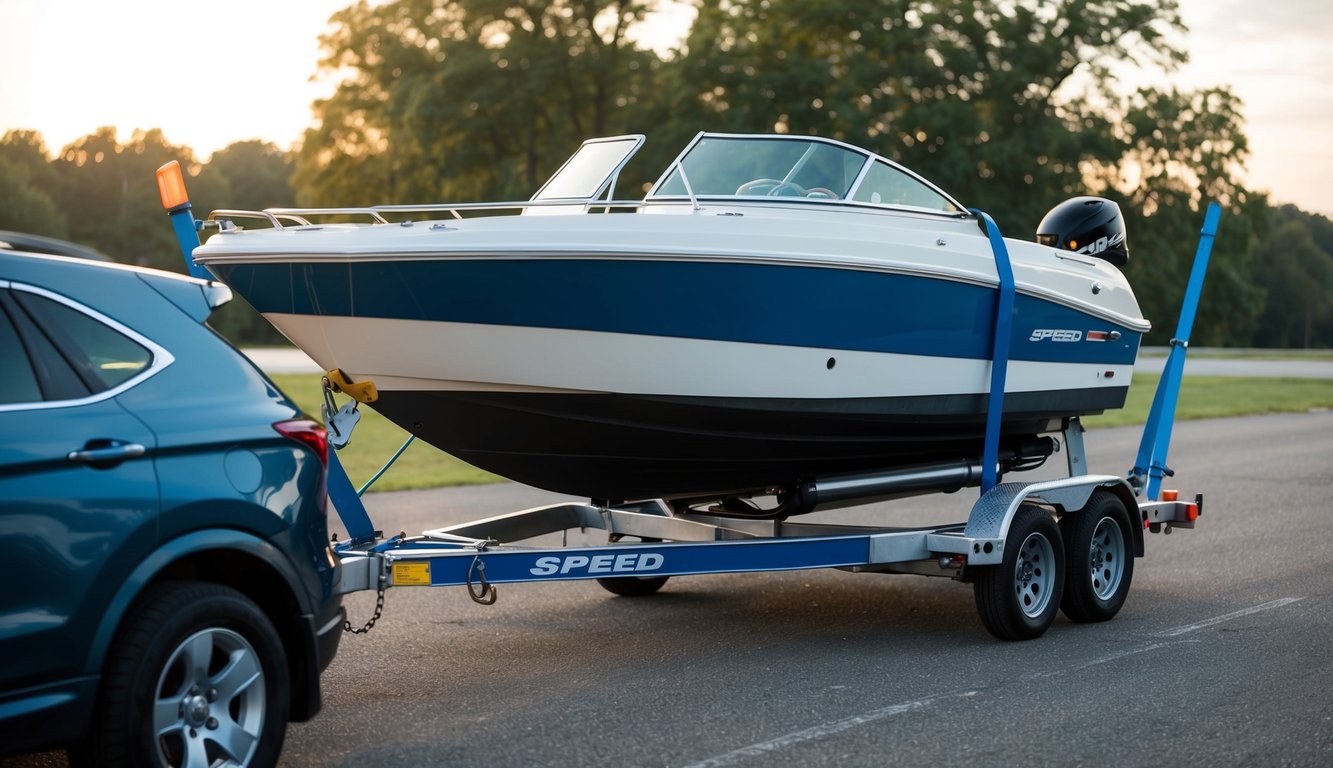
Transporting your speedboat doesn’t have to drain your wallet. Strategic planning and smart choices can significantly reduce costs while ensuring your vessel arrives safely at its destination.
Minimizing Expenses without Compromising Safety
- Choose the right transport method based on your boat size and distance. For shorter distances, using your own trailer is often the most economical option. Make sure your trailer is properly maintained to avoid costly breakdowns during transport.
- Prepare your boat properly before transport to avoid additional fees. Drain all fuel and water tanks to no more than ¼ capacity, disconnect batteries, and secure loose items. This reduces weight and eliminates potential hazards.
- Consider sharing transport costs with other boat owners heading in the same direction. Many transport companies offer discounted rates for multiple boat shipments.
- Compare quotes from different transporters rather than accepting the first offer. Online boat transport marketplaces can help you find competitive rates from reputable carriers.
- Insurance options matter too. Check if your existing boat insurance covers transport, potentially saving on additional coverage costs.
Timing Your Transport for Off-Peak Rates
- Schedule your boat transport during off-season periods when demand is lower. Winter months (November-February) typically offer more affordable rates since fewer people are moving boats.
- Book well in advance to secure better pricing. Last-minute arrangements often come with premium charges due to scheduling constraints and limited availability.
- Be flexible with your delivery dates if possible. Transporters may offer discounts if they can incorporate your boat into an existing route or backhaul opportunity.
- Midweek transports (Tuesday-Thursday) are often less expensive than weekend shipments when demand peaks.
- Consider weather patterns when planning your transport. Avoiding storm seasons not only ensures safer transport but can also result in better rates due to reduced weather-related delays.
